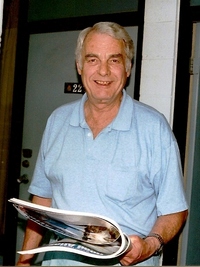Richard Harold Campbell was born in Fairmont, West Virginia on February 25, 1928. He married Beverly Ropp Campbell. He attended East Fairmont High School, and then West Virginia University. There, he was a member of the Phi Kappa Psi fraternity, the Fi Bata Capar honorary, the Tau Beta Pi engineering honorary society, and the track team.
Campbell briefly worked for the Bethlehem Steel Company, before enlisting in the U.S. Air Force in 1950, to serve during the Korean War. During his time in the Air Force, he worked on logistics for the Strategic Air Command and for countries in NATO (North Atlantic Treaty Organization). He also served with the U.S. Department of State and the National Air and Space Administration.
In 1965, he received a Master’s Degree in Public Administration from George Washington University. Campbell had a 25-year career with the Air Force, and retired as a Lieutenant Colonel in 1975. He was then hired by the U.S. Energy Research and Development Administration (Now the Department of Energy). He served as a project manager for remedial action at uranium mill tailings sites, and as the director of the emergency management program for the nuclear weapon complex. He retired in 1990, but continued to do consulting work.
Campbell was interested in Military History, and published The Silverplate Bombers: A History and Registry of the Enola Gay and Other B-29s Configured to Carry Atomic Bombs. His work focused on the development and delivery of the Silverplate B-29 bomber, combat missions, and the secret work of the 509th Composite Group.





